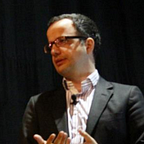Corporate Venture Capital: Imitating VCs does not work
- Full report here
- Corporate venture capital has a high level of cyclicality due to the market and its corporate management cycles. Currently, the CVC industry is in its fourth cycle.
- CVC investment growth still goes on despite the pandemic
- CVC and VC incentives are very different; copying the way of working of VCs do not work
- We suggest four steps in designing the CVCs; a- Manage the forces of CVC cycles b- Focus on strategic objectives with the balance of financial ones
c-Align the structure to the objectives d- Build a mutually complementary relationship with startups
Cyclicality of CVC
The first corporate venture funds emerged in the mid-1960s. Since that time, corporate venturing has undergone three boom-and-bust cycles that closely track the independent venture capital sector. The independent venture capital is cyclical too. There are a supply and demand relationship between venture capital(supply) and entrepreneur requests for investment(demand). The supply of venture capital is determined by the willingness of investors to provide funds to startups. The willingness of investors to commit money to venture capital funds is dependent upon the expected rate of return against other investment instruments. Higher expected return leads to a greater desire of investors to supply to the venture capital funds. However, in the venture market, this equilibrium generally happens with a lag; the number of funds provided may not shift rapidly. In his research, Josh Lerner explains;
Venture capital funds’ adjustment process is often quite slow and uneven, which can lead to substantial and persistent imbalances. When the quantity provided does react, the shift may “overshoot” the ideal amount and lead to yet further problems.
This cyclicality impacts CVC funds. Corporations typically enter the corporate venture capital market after the independent sector showed signs of success. All too often, however, corporations overbuilt capacity without carefully thinking out the implications. This strategy invariably leads to retrenchment. In our opinion, for more than two decades, we are in the fourth cycle of boom globally.
Current state of CVC Industry
Since 2001, CVC investment has been growing globally; the US is the pioneer and followed by Europe and Asia. Germany, UK, Japan, and China are leader countries in those regions. As Exhibit 1 depicts, CVC is attractive for new entrants. On the other hand, most the newness indicates that the CVC life span is not very long, as we will elaborate in the next section.
While investment growth keeps surging, CVCs increase their venture capital investment with %25 of the entire space. CVC’s focus goes to invest later stage and mature startups. More than half of the deals are later stage. According to CB Insights, the average CVC deal size is half larger than independent VC deals.
The majority of CVC goes up to five investments, while Intel Capital and Wayra are the most actives ones. Also, the banking and insurance industry is very interested in set up a CVC by IT & Software.
As demonstrated in Exhibit 2, global CVC investment grew faster than the VC ecosystem and did not have a big hit from Covid19. Also, in terms of capital size, the majority of the investment is a later stage. The majority is an early stage in terms of deal count.
Seesaw of entrepreneur between CVCs and VCs
CVC and VC incentives are tied to their objectives. Independent VCs look for pure financial goals, whereas CVCs’ focus might be strategic, and they have dependencies on their parent company. Startups and CVCs should prefer a complementary relationship. When there is a lack of collaboration, the right side of the below seesaw is not healthy, principal-agent problems frequently emerge in the deal between the CVC and the startup.
Selecting a CVC term sheet is more viable if there are synergy and learning potential for a startup. Both a CVC and a startup should be interested in an investment relationship if the seesaw’s right side is strong. Otherwise, a startup and independent VC relationship will be more viable for both the startup and the CVC.
How to make a CVC design?
The average tenure of a CVC program is 3.8 years — half of the independent venture capital funds’ average life span. However, according to the same research, the average CVC life span is getting longer, and it came from 2.0 years. As we presented above, more than 50% of CVCs have been in operation for five years or longer. A shorter life span does not directly mean less successful CVC investing capability, but it’s essential to design successfully.
Starting an independent venture capital has its challenges. Corporate venture capital may have less difficulty in some areas. However, there are problems for a CVC in identifying and sticking long-term objectives, developing collaborative governance, and mutual value-adding terms between the startup and the parent company. This challenge is the main reason for the short life span of most of the CVCs. They should not imitate an independent VC’s investment focus and operational processes. Otherwise, encountering negative consequences of CVC cycles is inevitable. In our CVC foundation approach, we suggest four design circles;
1- Design Circle 1 — Objectives: A robust strategic focus with necessary financial objectives
2- Design Circle 2 — Structure: An aligned structure to the objectives
3- Design Circle 3 — Operation: An operation design that makes collaboration, synergy, and due diligence process effective
4- Design Circle 4 — Performance: A performance monitoring that allows improving short term performance in a long term horizon
